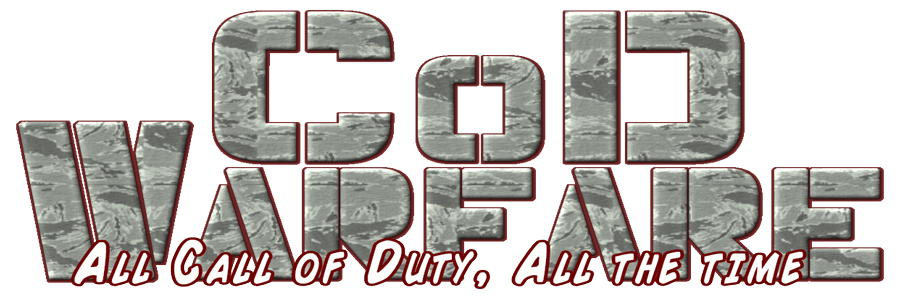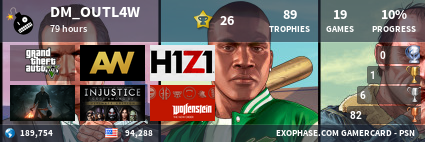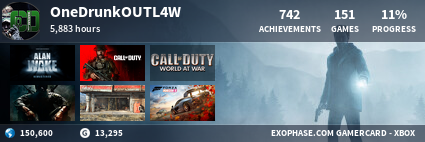
Story by Dave Cook
Thu, Aug 22, 2013 | 21:51 BST
Destiny developer Bungie is trying to advance the shooter genre in ways never attempted before. VG247′s Dave Cook checks out some new footage and speaks with the studio to find out how.
Given Bungie’s track-record of setting precedents within the shooter genre, I wasn’t surprised when the studio’s workflow engineer Brandi House told press at gamescom that there are now over 400 people working on Destiny.
The studio’s aim is to once again disrupt a space now populated by well-funded sharks, and it’s clear that such mass innovation in the triple-a space doesn’t come cheap. This is the same team that brought us regen health, that inspired the core of many shooters out there today, and that captured the attention of millions worldwide with Halo.
The question is, can Bungie catch lightning in a bottle twice?
Destiny is unlike anything else in the shooter genre in that it blends MMO sensibilities, FPS mechanics and RPG traits into one seamless and expansive mix. It’s neither one of these ingredients alone, nor is it all of them at once. It’s what you want it to be, and along with tools that give rise to emergent experiences it allows for infinite possibilities.
If you see another online player phase into your world, there’s absolutely no obligation to acknowledge them at all. If you’d rather play Destiny as an absorbing, narrative-led solo experience then the right to do so is entirely yours. That said, if you want to shake things up by forming a three-player Fire Team and raise some co-op hell in Live Events then Bungie invites you to be their guest.
Across Earth and its surrounding galaxy of planets, players can carve out a personal legacy formed by cooperation, seclusion or competition. The choice is entirely yours, and after seeing Destiny at gamescom for the first time today, and interviewing Bungie’s senior writer and community manager Eric Osborne, I’m really starting to see what it is the studio is trying to do.

Bringing MMO to a gun-fight
Ever since Destiny was revealed I asked myself if it was an MMO, and I told myself that perhaps Bungie was refraining from the term due to certain preconceptions and baggage that comes with it. The game has live events that see online players tackling enemy encounters and objectives that spawn into the world. The example we were shown today involved several players unleashing hell on a Devil Walker tank that looked like a hulking metallic spider.
I asked Osborne how these Live Events work in practice as well as how often they spawn into the world. “We’re playing a lot right now with the frequency and novelty of experiences,” he replied. “There’ll be a range of things you can do in the world, and the public event we’re demonstrating is the Devil Walker – the big tank that drops into the world – this big, grandiose cinematic moment. That’s one of the super-compelling, high-gravitational pull things players will have a hard time ignoring.
“We’re building a first-person shooter, it’s an action game, it’s a genre we love, it’s something we’ve done even before Halo right? – with Marathon and even before that with Pathways [Into Darkness]. It’s something we feel really comfortable doing, it’s something we actually love building and that’s how we approach titles.”
“You could [ignore it] if you were on a story mission and you didn’t want to jump into that cooperative experience. You could just blow past it but we’re trying to make those things totally cool. We’re playing a lot right now with, ‘what’s the proper pacing for that?’ how do we give people a lot of bite-sized things they can do in the world as opposed to these big set-piece moments?
“What’s the right amount of big novel content, what does the frequency look like? Do I want them to be predictable and scheduled or do we want them to be surprising? I think we’re going to carve a pretty good sweet spot between all of those things once we figure it out. The cool thing is, in a connected world we can sort of tweak and change those things as we see players dig in and see real data and what they’re saying to us online.
“If you think about what we’ve been able to do in the past with Halo competitive multiplayer – whether it was content or actually tweaking and changing activities based on feedback – our goal is – and we believe we’re actually obligated – to do that now across all of these different activities that threads the story content, threads the cooperative content, and threads through the ambient content in the world itself. We want to grow it over time.”
Of course, if you do choose to engage – simply by walking over to the event and taking part – you’ll be required to do a lot of shooting. Destiny’s load-outs consist of three weapon slots. There’s one for primary weapons like assault rifles, another for specialist weapons like brutal shotguns and another for heavy guns that we were told can result in an immense feeling of empowerment.
Your arsenal also includes ‘Supers’, special abilities that give your character an edge in battle. We were shown a ‘Nova Bomb’ skill, which sees players leaping into the air and hurling a fireball down at enemies, ‘Golden Gun’, which grants one-shot kills for a short period and ‘Fist of Havoc’, an earth-shattering ground pound attack. In your quest to unravel the mystery of what happened to the human race and its ruined colonies across our galaxy, you’ll absolutely need these skills to survive.
It wouldn’t be a persistent online world without some kind of loot, and Destiny doesn’t disappoint in that department. Fallen aliens will drop a diverse range of avatar gear and weaponry engineered to give each player the chance to look and feel unique. It’s also worth noting that other players can’t steal your loot.
We were shown a flash of available decals, gun designs and outfits – the volume of which already looks staggering – yet the game is only just in pre-alpha. I can’t begin to fathom what the final unique weapon and gear count will be by the time Destiny launches. Regardless, this ability to carve out a personal identity and of course – destiny – lies at the heart of what Bungie is trying to achieve.

Forging a legend
Creating a persona is where MMOs and Destiny absolutely do fall in close proximity, yet I wanted to ask Osborne why Bungie has been careful to avoid the term ‘MMO’ in the same breath as the shooter. It seems to me that it veers in line with what Guild Wars 2 has achieved in its blend of solo play, and live events that give rise to seamless cooperative play, so I posed him the question.
“We’re building a first-person shooter,” he explained, “it’s an action game, it’s a genre we love, it’s something we’ve done even before Halo right? – with Marathon and even before that with Pathways [Into Darkness]. It’s something we feel really comfortable doing, it’s something we actually love building and that’s how we approach titles. Do we love it and can we do this for ‘x’ number of years and have fun?
“At it’s core [Destiny] is an action game but there are really fun things around that: creating a new character, growing and changing over time as you get new weapons and gear. That feels really ‘RPG’ for players, that persistent character that follows you into every mode. So whether you’re doing campaign or competitive multiplayer or cooperative experiences, that character persists in the things you earn.
“A minimal viable product for us and the bar we set ourselves and that our fans set for us is a great story set in a universe worthy of exploration, with epic scope and scale, memorable characters, enemy AI that is super-fun and worthy of a fight, guns that are awesome to fire and where I’m the most powerful actor in the world.”
“It sort of tells a story for you and legacy for you, so if you do a lot of competitive multiplayer and then you enter a public space and see someone who’s been doing a ton of cooperative modes or maybe a strike or a raid, they’re going to have different gear than you have and you’ll be able to see the things they’re wearing.”
I then suggested to Osborne that these items almost serve as a badge of honour for seasoned players to wear with pride and he replied, “Like a badge of honour, right, their trophies. You look at them and go, ‘Oh where’d you get that cool rocket launcher?’ and sort of figure it out, go online to figure out where they’re getting it or do a little bit of exploration in the world.
“In that public space in itself, those public spaces are like cross-roads. You see players coming out of story chapters, moving towards a raid of gearing up for competitive multiplayer, and that’s where we start blending the lines and seeing a little bit of that MMO aspect creep in. We’ve been really careful about how we describe it.
“It’s definitely a first-person shooter and the cool thing is we get to explore this space of how do we take a first-person shooter – this thing that we understand deeply and love, then smash it head-on into something like a raid? How does that work in our world? How do we put a Bungie signature or stamp on that and make it feel really cool?”
It’s a big question, but one way Bungie is putting its very own mark on Destiny is in the scale of its large, Halo-esque play spaces. Whether you’re on the ravaged wastes of Earth with its burned our cars and areas reclaimed by nature after years of abandonment, or the surfaces of Mars, Saturn or the Moon, there will always be wide expanses begging to be explored, each hiding secrets, lurking threats and spoils to be won by you and your Fire Team.
I asked Osborne how Bungie uses next-gen tech to make these environments sing. “You can definitely do more fidelity. The richness and the fidelity of the world is just really cool. Our artists are able to just absolutely have their way, so there’s beautiful real-time reflections on the surface of the water, there’s beautiful sky-boxes and vistas, you can render individual blades of grass as bespoke pieces of geometry that move around a player footfalls and just really define detail work that makes it feel really great. Obviously the art palette and style works its way across every platform we ship on. We have a very high bar for that stuff.”
On the size and density of these environments he added, “We wanted to build worlds that felt like ‘places’ you were visiting. We built all these beautiful spaces in Halo and people would go off and experience them one time, so we were sort of cuing from – instead of Hollywood … where we’re building this huge story and ship it once every three years – how do we take something that is a great cinematic story, that does have memorable characters, the cast and the compelling, captivating storyline, but more like great television like The Wire, Battlestar Galactica and Doctor Who where you keep coming back?
“It feels rich, different and the world changes a little bit. The characters are doing different things or different enemy motivations that you’re learning about, histories you’re uncovering and gear you’re exploring. There’s an activity regardless of the mood you’re in.
“It’s Friday night, you’re fried you’ve worked all week and you just want to jump into competitive multiplayer with your buddies and you can do that. If you have a long weekend and you’re feeling spry, you want to just binge on the story you can do that too. Some of that is just baking directly into the world, some of that we’re thinking about, ‘how do we take that and sort of extend the experience beyond launch with players?’”

The long tail
That’s the burning question isn’t it? As Destiny does bear similarities to MMOs, and given the amount of resources and energy put into the project you have to figure that both Bungie and Activision want this game to be supported for years to come. Luckily, the studio already has a proven track-record of listening to its fans, engaging and hiring from the community, as well as responding when things break or fall out of balance. I’m told that practice will remain at the fore of Bungie’s post-launch strategy.
Osborne stressed, “A minimal viable product for us and the bar we set ourselves and that our fans set for us is a great story set in a universe worthy of exploration, with epic scope and scale, memorable characters, enemy AI that is super-fun and worthy of a fight, guns that are awesome to fire where I’m the most powerful actor in the world.
“It’s got to be a great cooperative experience I can play with my friends over and over again, and we can just have a blast with one another and just celebrate and be victorious over our enemies, then that competitive experience. That’s what our bar we that we have to hit is for most players – we think a lot of players do all three of those things.
“The other stuff that we’re layering in is how we’re blending and blurring the lines: the character creation, the social spaces, the public spaces, the public events, the big open worlds, the dynamic nature, your persistent character are additive to all that. That’s where we’re pushing the genre.”
He added, “A lot of it is playing the game, listening to the community, seeing what they’re saying, looking at data and actually seeing exactly what people are doing to see problems and where things are going really well. But it’s just about getting it out in the wild, seeing how players react and then reacting to what they’re telling us.”
There’s still much to say about what Destiny is, what it is capable of and how it performs. One significant piece of that particular puzzle is PvP and while Osborne and his team aren’t yet ready to share the finer details, I did learn that just like everything else in the game, competitive multiplayer is entirely optional. With online play extending many franchises long past launch, it’s already clear that PvP is crucial to Destiny’s long-tail.
“We want to make sure PvP and competitive multiplayer is actually a choice as well. So if you’re just running through the world and somebody else decides they want to play competitive multiplayer and you don’t, then they just shoot at you, then that sucks right? That’s not a fun experience.
“We want to make sure that people are able to pick and choose things they want to do in the world. There’s some really slick UI stuff we’ll be doing that we haven’t really detailed now, but the seamless side of it is very cool. I think, overall, there’s some places where the seamless nature makes a lot of sense, there’s some places where we need to draw brighter lines for people and tell them like, ‘go here to do this’, to make it really easy to digest.
“The seamless match-making stuff is really cool because it makes the world feel alive, and so another way we can stitch activities in or stitch other things in has to answer to the fiction. It has to be fictionally grounded so if you’re in a competitive multiplayer match you can be sure there will be some fiction there to make sure that feels really interesting and cool.”
Destiny is certainly interesting and it definitely looks cool, but I feel there’s much more to this discussion that will have to wait for another day. It’s going to be a tantalising wait for the converted as Activision drip-feeds nuggets of information as the game’s development rolls on, while those on the fence may still be waiting for that one killer hook to drop.
Either way, the ambition, talent and vision is there to try something that has never been attempted in the shooter space before, and such brass balls simply must be applauded even if you’re not keen on Destiny so far. Studios daring to dream bigger is something we need more of as gamers, and that’s why I think Bungie could really shake things up with this game.
However, we’re yet to get it into our hands. Then, and only then can we say for sure if Bungie’s bar has been raised too high, or if it’s truly on the cusp of changing the way we think about shooters once more.
Destiny is coming to PS3, PS4, Xbox 360 and Xbox One in 2014.
http://www.youtube.com/watch?v=Y1OjUWw43co&feature=player_embedded
More...














